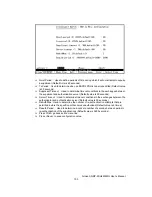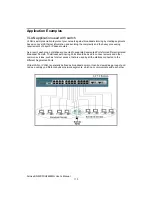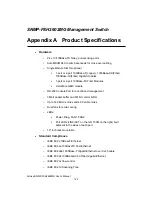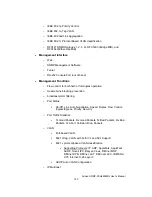
AirLive SNMP-FSH2602MG User’s Manual
113
Single IP – Agent mode” application used with switch
Single IP
is a management utility of network devices for administrator to access private IP devices
through a single IP (real IP or private IP). By this utility, administrator can manage much more
network devices than ever and reduce the demand of real IPs, because every real IP switch can be
an agent host for any network devices in their private IP domain.
There are some defects in the current solutions of network management. For example, switches
with legacy “stack” capability have to stack together due to their special limited-length cables, and
have the limitation of stacking quantities and brand compatibility due to hardware specification.
Moreover, administrator always has troubles in finding out the target window among those
multi-display interfaces. Though there are expert network management utilities available in the
current market, like HP OpenView, expensive cost and difficult task of implementation into
embedded system are main drawbacks for their practical application.
Because of the rapid development of Ethernet, the scare of real IP shortage becomes a serious
issue when an enterprise continues its IA growth. It is a resource waste and cost a large expense
that every individual host has its own real IP inside the enterprise’s network. Privates IPs and NAT
function (provided by router, gateway or IP sharing) provide a solution to the shortage of real IP, but
new issue gives rise to that remote user from internet has no access permission into the private IP
domain, thus an administrator has no choose but accesses the private IP devices from the very
location of the local area network to trouble shoot any problems that network clients report, until
now “Single IP-Agent mode”, one of this switch special features, provides a new solution for all
issues above.
There are benefits of “Single IP-Agent mode”:
Reduce the demand of real IP (public IP).
Since there are up to 32 devices which have a IP agent as “Single IP” switch, meaning that the
switch becomes a network agent and handles all functions of these devices , MIS can reduce the
number of hosts that are directly connected to internet, and make use the saved real IPs more
efficiency.
Integrate network devices without modifying hardware or software.
“Single IP” is a technique mainly based on application layer in OSI standard. The connection
between master and slave hosts is linked by Ethernet protocol. It is little concern of hardware and
packet transmits. Modifications of hardware or software of the slave hosts are not necessary.
Thanks to the characteristics, single IP switch gives the best compatibility with other network
devices, router, gateway, web server and even another brand switch.
Handy User interface without learning complex setting or changing user’s habit of
operation.
A floating menu gives a comprehensive user interface for administrator to pick the managed
devices. It provides host IP and host name in the same time, saving the trouble that the
administrator tries to remember which IPs those slave hosts are assigned to. Since there is only
one browse windows displaying on the screen in the same time, agent manager play a role like as
TV channel controller. Administrator can easily switch to the device he wants and enter the setting
webpage as he did before.
Totally remote control of network devices in private IP domain.
It is not necessary for MIS to put all devices together in one place. Single IP function will operate
normally no matter how far the distance is between the master and the slave hosts if their packets
can reach each other in local area network. Moreover, a remote administrator can access the
far-side servers in the private domain through the intermediary of single IP switch which is directly
connected to internet.













































